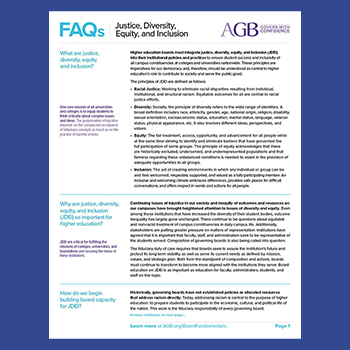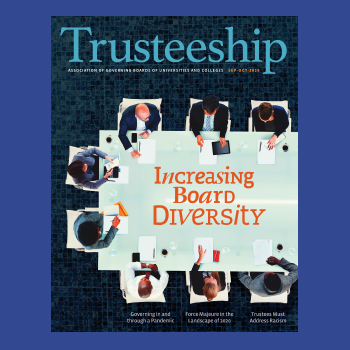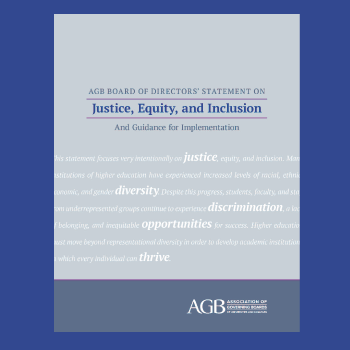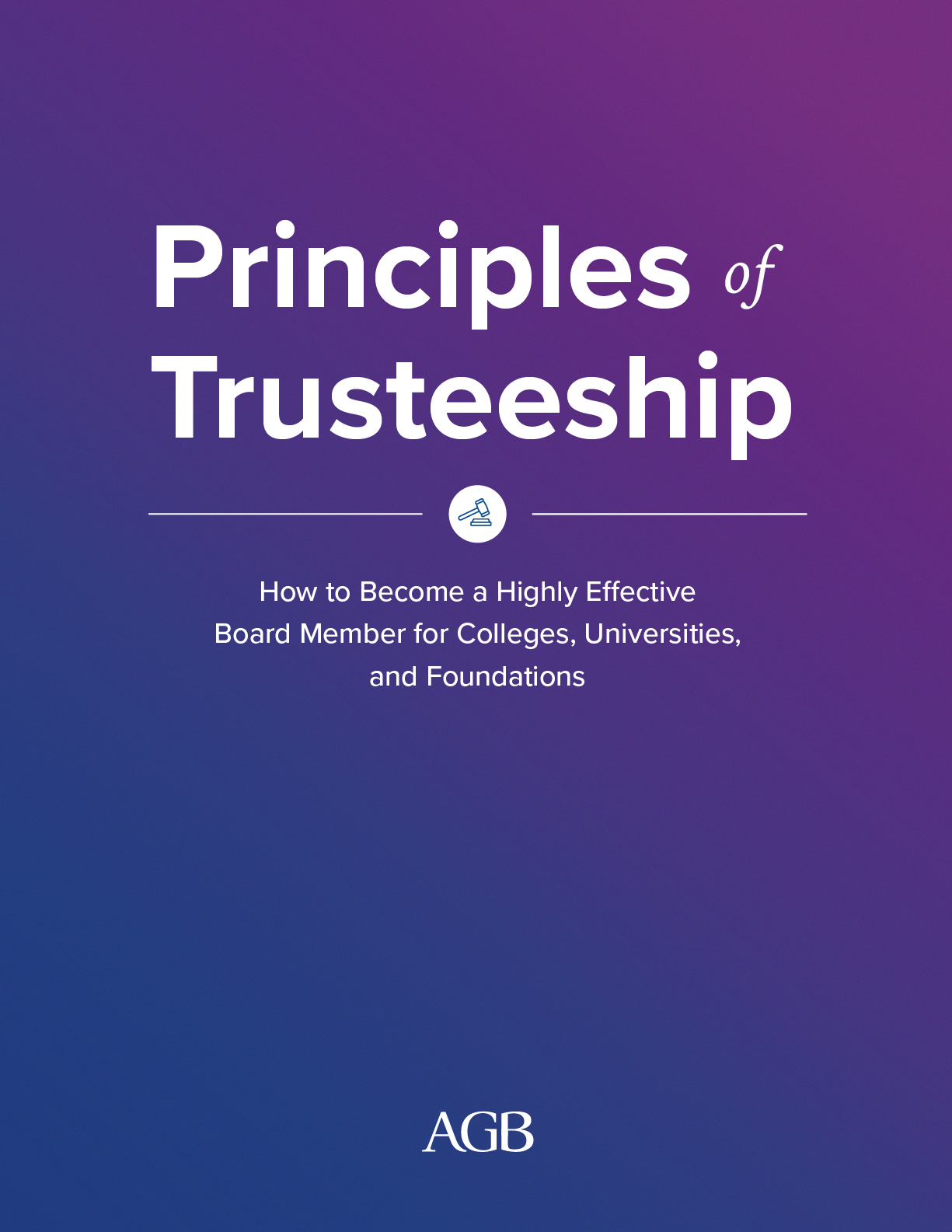Principle 6:
Champion justice, equity, and inclusion.
Principle 6 supports the fundamental function of leading by example through removing systemic barriers to student success and creating a sense of belonging for all students, faculty, and staff. To ensure justice, equity, and inclusion, you must:
- Protect and promote justice and equity throughout the enterprise. The board is ultimately accountable for ensuring that the institution creates a welcoming and safe environment in which all students, faculty, and staff feel respected and valued.
- Seek diversity and model inclusion on the board. Diverse boards are better positioned to address the complex problems facing higher education because they include different perspectives.
- Be mindful of how your experience shapes your assumptions. The hard work of advancing justice, equity, and inclusion is an ongoing, a personal, and an often difficult journey.
“Diversity adds to the wealth of the board
and the productivity of the board, where you’re bringing different life experiences.”
—Board Member, Public University
Questions for self-reflection.
- How do our institutional mission, vision, and strategic plan support diversity and inclusion? To what extent do our policies and practices, intentionally or unintentionally, foster inequity?
- To what extent does the board consider the needs and experiences of students, faculty, and staff by race, ethnicity, and gender? How does it consider the impact of policies and decisions on different groups? How does it measure institutional success in regard to different groups?
- What has the board done to demonstrate a commitment to racial equity and social justice? How has the board educated itself on diversity and inclusion? What have you done personally?
- How well does board composition reflect our community? How diverse is the board? What do board dynamics reveal about board inclusion?
- What experiences do you bring to board service? What experiences do other trustees bring? What perspectives are missing?
Resources for deeper learning.
Justice, Diversity, Equity, and Inclusion
Consulting Service
Board Leadership for Racial Justice
Trusteeship Podcast Episode
Forum: Trustees Need to Address Racism
Trusteeship Magazine Article
Racial Tensions Between Presidents and Governing Boards
Trusteeship Magazine Article
This guide conveys the essence of highly effective trusteeship in a concise, easy-to-use format. It defines the attitudes and actions of highly effective board members, and provides insight into three fundamental functions:
- Understand governance by embracing all of your responsibilities in a structure of shared leadership.
- Lead by example by upholding the highest standards of integrity.
- Think strategically by focusing on what matters most to the long-term success of the whole enterprise.








